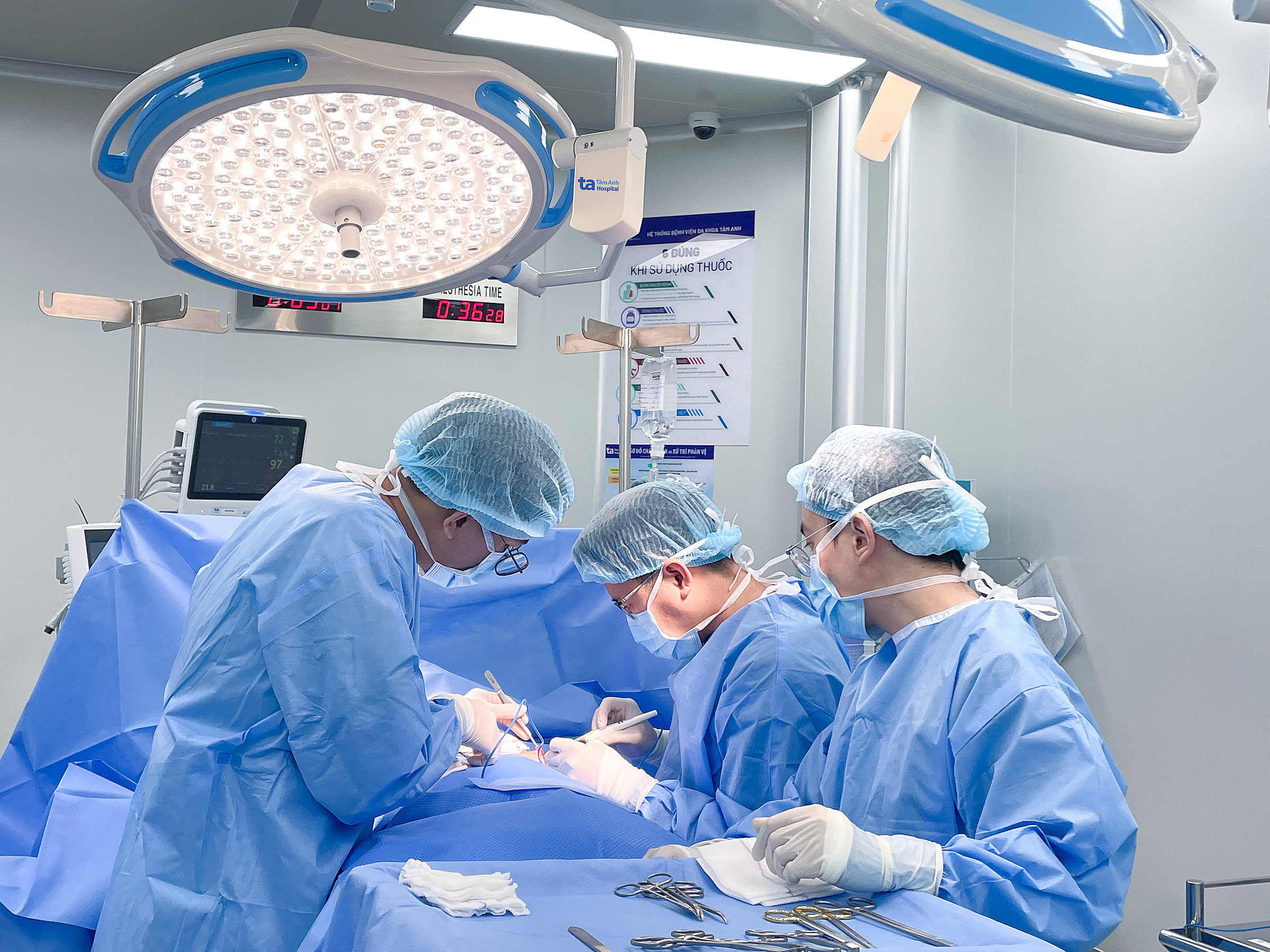Eight years ago, doctors in Germany diagnosed Mike with enlarged breasts due to obesity, advising him to lose weight. He committed to a strict diet and exercise regimen for eight years, significantly improving his physique, but his breast size remained unchanged.
In early August, Mike and his wife returned to Vietnam and visited Tam Anh General Hospital - District 8. An ultrasound revealed that his breasts measured approximately 10x6x7 cm, with a volume of 220 cc, equivalent to a woman's A cup (150-250 cc). Hormone tests were normal, ruling out pituitary tumors or hormonal imbalances.
Dr. Duong Quang Huy, Head of the Andrology Unit, explained that Mike suffered from gynecomastia, a condition characterized by persistent breast development lasting over three years. Most cases are caused by prolonged hormonal imbalances, such as low testosterone, high estrogen, or elevated prolactin levels.
"This patient had very low estrogen levels, suggesting idiopathic gynecomastia, possibly due to breast tissue resistance to testosterone or hypersensitivity to estrogen," Dr. Huy observed.
With enlarged breast tissue exceeding 5 cm in diameter, as in Mike's case, surgery is the primary treatment. If the tissue is excessively large and causes sagging, additional procedures like skin removal and nipple repositioning may be necessary to address the issue completely and achieve optimal cosmetic results.
Mike was discharged one day after surgery and advised to avoid strenuous activities or anything that puts pressure on his chest during recovery.
 |
Dr. Huy (center) performs surgery to remove Mike's breast tissue. Photo: Tam Anh General Hospital |
Dr. Huy (center) performs surgery to remove Mike's breast tissue. Photo: Tam Anh General Hospital
There are two types of gynecomastia: physiological and pathological. Physiological gynecomastia, or breast enlargement due to temporary hormonal fluctuations, typically resolves within three years. This type is common in infants and during puberty. Men experiencing male menopause, with declining testosterone levels, can also develop the condition. Additionally, pseudogynecomastia, caused by fat accumulation in the chest area, is often seen in overweight or obese individuals.
In pathological gynecomastia, increased estrogen or decreased testosterone (or both) stimulates breast tissue growth. This can result from medication side effects, underlying medical conditions, or unhealthy lifestyle choices like frequent use of stimulants or alcohol. Common signs include breast swelling, pain or tenderness, and enlargement in one or both breasts. Some cases may involve nipple discharge.
While gynecomastia doesn't directly cause infertility, it can indicate hormonal problems that might affect reproductive health. Dr. Huy advises men experiencing breast enlargement to seek medical attention to determine the underlying cause, improve their appearance, and safeguard their fertility. Depending on the cause, treatment may involve medication or surgery.
Dinh Lam
*The patient's name has been changed.
| Readers can submit questions about men's health here for doctors to answer. |












